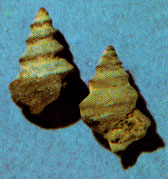
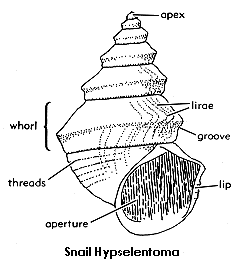



Ancient Life in Kansas Rocks, part 15 of 27


The snail Hypselentoma can be identified by fine spiral thread-like lines on its sides and a shallow groove just below the outer edge of the whorls. Also seen on the uppermost slopes of the whorls are fine lirae (see drawing). (Stanton Limestone, Upper Pennsylvanian)
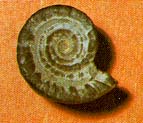
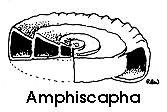
Amphiscapha, shown above slightly enlarged, is another unusual snail. On the side hidden from view, the outer whorls or coils are raised leaving an inverted cone or depression, whereas on this side thay are flattened. Thus, rather than having an apex rising to a point as in most snails, it is depressed. These forms belong to the Superfamily Euomphalacea in which this distinctive coiling is common. (Coffeyville Formation, Upper Pennsylvanian)
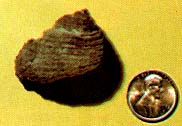
The snail Shansiella is recognized by its rounded whorls bearing low, spiral cords separated by wide spaces. Snails move by means of a muscular foot that extends from the aperature, with the pointed part of the shell directed rearward and the aperature downward. Most snails feed upon vegetation, but some are scavengers and others are provided with a filelike rasping mechanism which is used to bore through the shells of living prey. (Lane Shale, Upper Pennsylvanian)
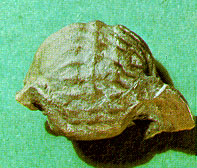
Pharkidonotus belongs to the bellerophontid snails, which are unusual in that they are coiled planispirirally, and not conspirially as are most other snails. Thus, as the snail grew, it added material at the opening (aperture) in such a fashion that the earlier whorls were totally enclosed. This kind of coiling is common among the cephalopods, or in the snail Bellerophon shown below. Pharkidonotus is identified by the raised ridge or crest down the center line and the corrugations across the whorls. (Eudora Limestone, Upper Pennsylvanian)
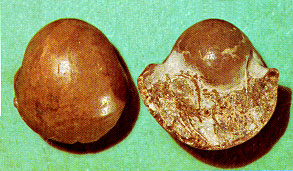
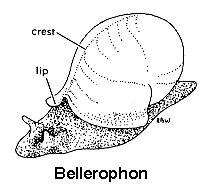
Bellerophon shown slightly enlarged in the photo above, is a snail somewhat similar to Pharkidontus. It is characterized by its globular shell, low crest, and ornamentation of simple growth lines. A reconstruction of how the snail carried its shell is shown in the drawing. (Drum Limestone, Upper Pennsylvanian)
Turritella is a very high-spired snail with many whorls, and ranges from the Cretaceous to the Recent. (Kiowa Formation, Lower Cretaceous)
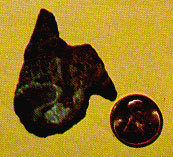
Kansas Geological Survey
Placed online Feb. 1997
URL = "http://www.kgs.ku.edu/Publications/ancient/f15_snails.html"
Send comments and/or suggestions to webadmin@kgs.ku.edu